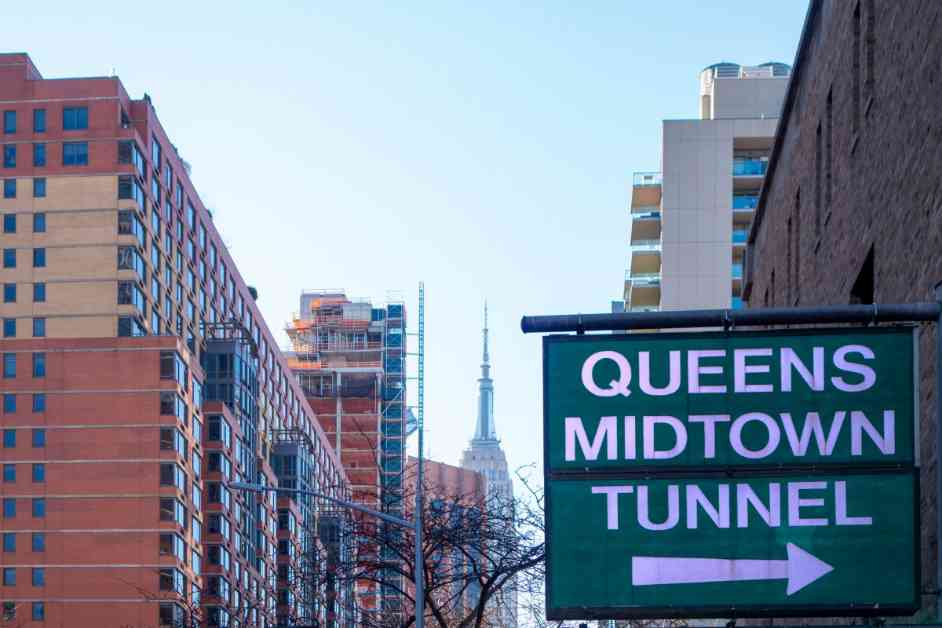**Congestion Pricing: A Guide for Queens Drivers**
Congestion pricing is set to take effect at midnight on Sunday, following a ruling by Federal Judge Leo Gordon that greenlit the toll after a last-minute hearing on Friday evening. This move has sparked significant debate and led to multiple lawsuits, particularly from New Jersey State.
Judge Gordon’s 72-page ruling dismissed most of New Jersey’s grievances about congestion pricing but highlighted the need for further study on the toll’s potential impact on New Jersey communities, especially regarding air quality concerns. He set a deadline of Jan. 17 for New York and the Federal Highway Administration (FHWA) to address these environmental impacts.
Subsequently, attorneys representing New Jersey Gov. Phil Murphy filed a motion for clarification on whether congestion pricing could proceed on Jan. 5. Friday evening, Judge Gordon ruled that the toll could indeed go into effect, clearing the way for its implementation as planned.
**Queens Motorists Facing Congestion Pricing**
For Queens drivers utilizing the Queens Midtown Tunnel, a congestion fee will be charged as they exit onto residential streets, as is the case for those heading to the FDR Drive. Drivers can receive a crossing credit of up to $3 for entering the congestion zone during peak hours. However, even if drivers accessed the FDR Drive before reaching the tunnel, they will still be charged.
Under the new toll system, motorists entering Manhattan south of 60th Street during peak hours on weekdays and weekends will face a $9 fee, while off-peak entry will cost $2.25.
**Navigating Different Bridges**
Those using the Ed Koch Queensboro Bridge will be charged if they drive on the lower level or exit onto residential streets within the congestion zone. Meanwhile, drivers arriving in Manhattan via the Triborough Bridge will only pay a congestion fee if they travel onto residential streets south of 60th Street.
For trips outside the congestion zone, such as between the Bronx and Queens, no congestion fee will apply. However, tolls on Port Authority bridges outside Manhattan will still be enforced.
**Public Transit Options for Queens Residents**
Public transit remains a viable alternative for those looking to avoid the congestion zone. The extensive subway network covering western and central Queens provides convenient access. In areas not serviced by subways, MTA buses offer another option, with fares set at $2.90 for regular buses.
Express buses into Manhattan are available from various Queens neighborhoods at $7 per ride. Additionally, the Long Island Rail Road (LIRR) serves neighborhoods beyond subway reach, with one-way fares starting at $5 during off-peak hours.
**Elected Officials Weigh In**
State Sen. Kristen Gonzalez and Assembly Member Jessica González-Rojas have expressed support for congestion pricing, highlighting its benefits for public transit and air quality. However, Council Member Robert Holden has raised concerns about potential negative impacts on Queens neighborhoods, predicting increased congestion and parking issues.
Holden remains optimistic about a lawsuit filed by the Long Island town of Hempstead, believing it could halt congestion pricing. He questions the toll’s long-term viability and criticizes the MTA for what he perceives as inadequate environmental assessments.
In response, the MTA emphasizes the toll’s potential to reduce congestion in Manhattan’s central business district significantly. They argue that congestion pricing will lead to 80,000 fewer cars entering the CBD daily, ultimately improving traffic flow and air quality.
With these developments, Queens drivers must prepare for the impending changes brought about by congestion pricing, weighing the impact on their daily commutes against the broader goals of reducing congestion and improving public transportation in New York City.

